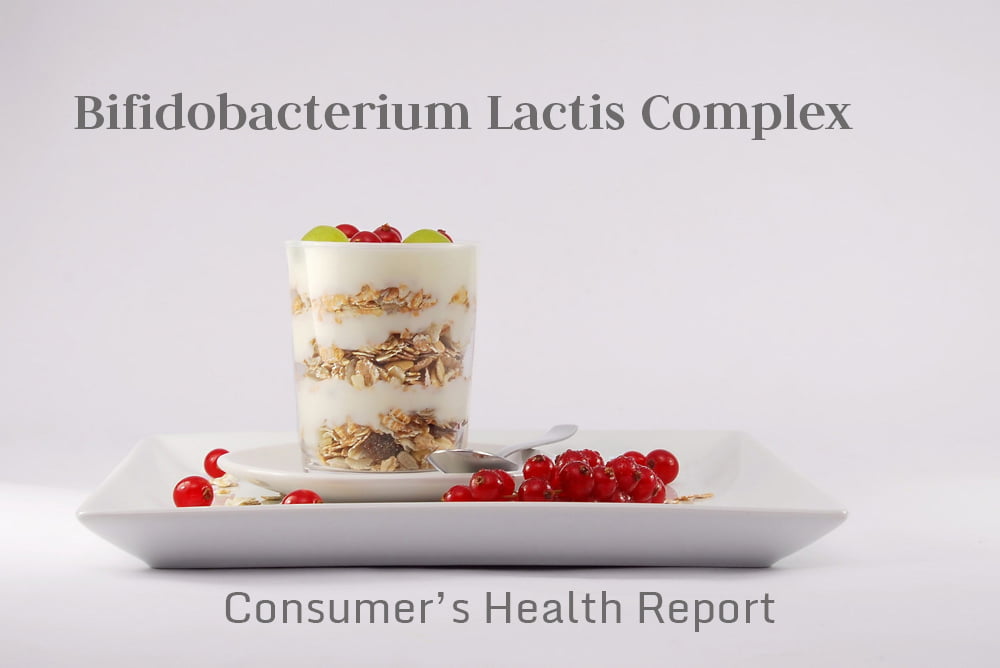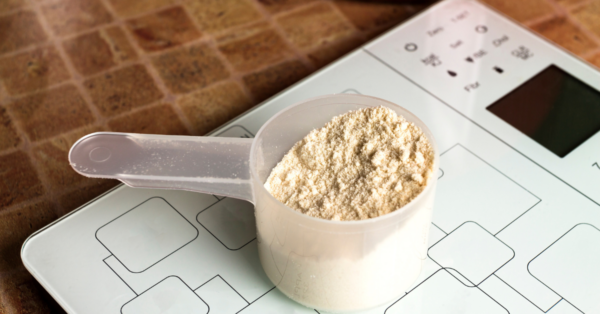Medically Reviewed by: Chris Duncombe, M.D.
What is Bifidobacterium Lactis Complex?
Bifidobacteria are a form of naturally occurring bacteria that are commonly found in the gastrointestinal tracts and mouths of mammals, including humans.
They are one of the common forms of bacteria found in the intestinal flora of humans and are believed to have many positive health benefits.
They can be grown outside the body, and can then be consumed orally for their medicinal benefit.(1)
Origins/Discovery
Bacteria were first observed by Dutch microscope pioneer Antoni van Leeuwenhoek in 1676, when he observed single-cell organisms living in drops of water. Two centuries later, Louis Pasteur became the first scientist to describe the biological activity of these organisms and proposed that diseases arose from the activities of these microorganisms. This is known as the germ theory of disease.
It wasn’t until 1899 that a distinction was made between disease-causing bacteria and beneficial bacteria. In that year French pediatrician Henry Tissier isolated Y-shaped bacteria that he called “
In 1910, Russian scientist (and later Nobel Prize winner) Elie Metchnikoff postulated that human aging was linked to the presence of toxic, “putrefied” bacteria in the intestines, and found that the lactic-acid producing bacteria commonly consumed by Bulgarian workers in fermented milk helped to stop the putrefaction and resulted in a better state of health and longer life. He postulated that “oral administration of cultures of fermentative bacteria would implant the beneficial bacteria in the intestinal tract.”
Metchnikoff himself consumed daily this same sour milk containing “Bulgarian
Before the 1960s, species of Bifidobacterium were referred to collectively as Lactobacillus
Where is Bifidobacterium Lactis Complex Found?
Bifidobacterium naturally occurs in fermented milk products such as yogurt and kefir. It can also be used to treat intestinal and other disorders in the form of probiotic supplements.
How does it work? What does Bifidobacterium lactis do in the body?
Bifidobacterium lactis is one of many types of bacteria that are considered “friendly” organisms and that are used as a form of medical treatment called “probiotics” (as opposed to antibiotics).
These “friendly” bacteria perform many functions in the human body, including breaking down food into more easily-absorbed nutrients, producing lactic acid and acetic acid to control intestinal pH levels, and preventing the spread of “bad” or disease-causing yeasts and bacteria such as Candida albicans and E. coli
The ability of Bifidobacterium to compete with other gastrointestinal bacteria and occupy a large percentage of bacterial flora may be due to this unique metabolism, which uses the key enzyme fructose-6-phosphate phosphoketolase (F6PPK), an enzyme not found in other intestinal bacteria.(7)
Potential Health Benefits of Bifidobacterium Lactis Complex
Bifidobacteria are considered beneficial organisms, and are often used as probiotic treatments for disease conditions (or medications) that have resulted in the destruction of “good” bacteria and the proliferation of “bad” bacteria. As an example of the former, medical treatment with antibiotics can succeed in destroying disease-causing bacteria and thus eliminating a disease condition, but at the same time the antibiotics can kill off normal benevolent (and essential) bacteria in the gastrointestinal and urinary tracts.
The theory of probiotic treatment in these cases is that taking Bifidobacteria during and after antibiotic treatment can help to preserve a balanced intestinal flora, preventing or neutralizing the kill-off of beneficial bacteria and the possible subsequent take-over by bad bacteria.(5)
The use of Bifidobacteria is common as a probiotic treatment to relieve or treat a number of intestinal disorders.
Bifidobacteria supplementation is considered to have a wide range of beneficial health effects, including the regulation of intestinal microbes, inhibition of harmful bacteria that appear in the gastrointestinal tract, modulation of local and systemic immune responses, production of vitamins, and the effective bioconversion of dietary compounds into usable bioactive molecules (digestion).(7)
Individual conditions for which evidence of Bifidobacteria’s possible effectiveness as a probiotic treatment exists are covered in the following sections.
Constipation Relief
Some research indicates that taking Bifidobacteria can increase the frequency and comfort of bowel movements in adults with constipation.(5,6,7,8) Some studies in children with constipation, however, have found that the effect of Bifidobacterium on constipation is not as effective as it appears to be in adults
Irritable Bowel Syndrome (IBS)
A study tracking the effect of Bifidobacteria on 77 adults with IBS found that all cardinal symptoms of the condition were significantly reduced in composite and individual scores for abdominal pain/discomfort, bloating/distention, and bowel movement difficulty.(11)
A clinical trial from the UK found that a fermented dairy product containing Bifidobacterium
Finally, a systematic review of 19 randomized controlled trials of the effects of probiotics including Bifidobacterium on IBS patients concluded that they appeared to be efficacious, although the magnitude of benefit was still uncertain.(14)
Diarrhea
In a 2005 double-blind clinical trial in which 80 infants ranging in age from 6 to 36 months were fed a probiotic formula containing Bifidobacterium
Ulcerative Colitis
A Japanese study found that fermented milk containing Bifidobacterium
Helicobacter Pylori Infection
Taking Bifidobacteria may fight against the H. pylori infection. One study found that yogurt containing bb12 and la5 (trademarked strains of
Necrotizing Enterocolitis
This
Lung Infections and Flu
Research suggests that taking a combination product containing Lactobacillus acidophilus and Bifidobacterium helped to reduce symptoms of cough, fever, and runny nose in children, and decreased the
Several studies have found that taking Bifidobacterium before and after receiving a flu shot have both increased the efficacy of the vaccine and enhanced immunity in elderly patients
Conditions for which insufficient evidence exists for Bifidobacterium’s effectiveness
Evidence to support the use of Bifidobacterium in treating the following conditions is considered inconclusive and/or insufficient at this time, although study authors and peer reviewers often suggest that more research is warranted
• Antibiotic-caused diarrhea
• Infections resulting from chemotherapy
• High cholesterol
• Celiac disease
• Scaly, itchy skin (eczema)
• Common cold
• Cancer
• Lyme disease
• Liver problems
• Lactose intolerance
Ways to Add More Bifidobacterium Lactis Complex to Your Diet
Foods
Dairy products such as yogurt and kefir naturally contain Bifidobacterium
Manufacturers of some brands of infant formula add Bifidobacterium
Probiotic supplements
The most convenient way to add Bifidobacterium
However, it is always a good idea to read the label of such products to make sure that Bifidobacterium lactis is, in fact, included in the mix. If you are particularly searching for Bifidobacterium lactis, make sure it is specifically listed in the ingredients.
Recommendations on Choosing Your Probiotics
Probiotic strains included in the product
Because Bifidobacterium lactis is not the only beneficial bacterium included in probiotic supplements, read up on the effects of other strains included in the product. These may include Lactobacillus acidophilus, Bifidobacterium bifidum, Bifidobacterium longum, Lactobacillus fermentum, and Lactobacillus rhamnosus.
Number of organisms
Probiotic supplements from reputable suppliers will list the number of colony-forming units (CFUs) their products contain. Commercial probiotic formulations typically contain 106 CFUs, but may range as high as 1012
Packaging
Make sure that the probiotic supplements you purchase are packaged in such a way to ensure that the bacteria survive the journey from the manufacturer to you. Packaging should ensure, for example, that the product is adequately shielded from light and moisture
Expiration date
Any probiotic supplement you consider should have an expiration date on its label. If it doesn’t, you should be suspicious and consider an alternative.
Additional Recommendations on Choosing Your Probiotics
• Choose your supplements from a reputable company.
• Follow the directions on the label and take the recommended dosage.
• Avoid taking probiotics on an empty stomach.
• Store probiotics properly – in most cases that means in a cool, dry place.
• Probiotics work best when taken in addition to a healthy diet. Probiotics are able to flourish best when they’re combined with fruits, vegetables
Dosages
Some general guidelines for taking bifidobacterium probiotics are listed below. If you are considering the use of Bifidobacteria for the treatment of a specific condition, consult your physician for more specific recommendations.
In adults:
• When taken for constipation, the typically recommended dose is 100 million to 20 billion CFUs daily, taken orally for 1 to 4 weeks.
• For irritable bowel syndrome, a common recommendation is 100 million to 1 billion CFUs daily, taken orally for 4 to 8 weeks.
• For airway infections, 3 billion CFUs of Bifidobacteria, used daily for 6 weeks.
• For ulcerative colitis, to reduce chances of remission, a dosage of 900 billion CFUs of Bifidobacteria plus Streptococcus, used once or twice daily. In the case of a complication after surgery called pouchitis, a dose of up to 3 trillion
• For
In children:
• For constipation, 1 to 100 million CFUs daily, taken orally for 4 weeks.
• For irritable bowel syndrome, 10 billion CFUs daily, taken orally for 4 weeks.
• For airway infections, 2 to 10 billion
• For diarrhea in infants, bifidobacteria plus streptococcus has been successfully used in children up to the age of 3 years, twice daily for 3 days.
• For ulcerative colitis, up to 1.8 million
Possible Interactions or Side Effects of Bifidobacterium Lactis Complex
Bifidobacterium
Taking with antibiotics
Taking antibiotics at the same time as bifidobacteria can reduce the probiotic’s effectiveness. To avoid this interaction, be sure to take your bifidobacteria supplements two hours before or after taking antibiotics.(30)
Warnings/Precautions/Safety
There has been insufficient research on the safety of taking Bifidobacteria lactis if you are pregnant or breast feeding, so check with your personal physician before taking it.
There has been some preliminary research that indicates that probiotic bacteria might grow too well in people with weak or impaired immune systems. Although this has not happened with bifidobacteria in particular, if you have HIV or are undergoing cancer treatment you should check with your physician before taking it.
[expand title=”References”]
- https://www.ncbi.nlm.nih.gov/pmc/articles/PMC4908950/
- https://tspace.library.utoronto.ca/bitstream/1807/6600/1/jb05023.pdf
- https://web.archive.org/web/20121004072755/http:/mail.successmakers.com/uploads/Probiotics_-_100_years_after_Elie_Metchnikoff_PhDs_Obsevations.pdf
- http://www.microbiologyresearch.org/docserver/fulltext/ijsem/54/4/1137.pdf?expires=1527240345&id=id&accname=guest&checksum=E73466F7733E791A32A7731BB7BC2EAA
- https://www.webmd.com/vitamins/ai/ingredientmono-891/bifidobacteria
- https://www.ncbi.nlm.nih.gov/pubmed/11876714
- https://www.ncbi.nlm.nih.gov/pubmed/17635382
- https://www.ncbi.nlm.nih.gov/pubmed/9129468
- https://reference.medscape.com/medline/abstract/25391345
- https://reference.medscape.com/medline/abstract/19300120
- https://www.gastrojournal.org/article/S0016-5085(04)02155-9/abstract
- https://onlinelibrary.wiley.com/doi/full/10.1111/j.1365-2036.2008.03853.x
- https://onlinelibrary.wiley.com/doi/full/10.1111/j.1365-2036.2008.03848.x
- http://gut.bmj.com/content/early/2008/12/17/gut.2008.167270.short
- https://www.ncbi.nlm.nih.gov/pubmed/15815206
- https://journals.lww.com/jpgn/Fulltext/2004/03000/Acidified_Milk_Formula_Supplemented_With.11.aspx
- https://www.sciencedirect.com/science/article/pii/S0958694601001005
- https://jamanetwork.com/journals/jama/fullarticle/1151505
- https://www.ncbi.nlm.nih.gov/pubmed/12569115
- http://gut.bmj.com/content/55/6/833
- https://academic.oup.com/ajcn/article/80/3/737/4690554
- https://www.ijidonline.com/article/S1201-9712(99)90024-3/abstract
- http://pediatrics.aappublications.org/content/125/5/921.short
- http://pediatrics.aappublications.org/content/115/1/1.short
- http://cochranelibrary-wiley.com/doi/10.1002/14651858.CD006895.pub2/full
- https://www.cambridge.org/core/journals/british-journal-of-nutrition/article/specific-probiotics-in-reducing-the-risk-of-acute-infections-in-infancy-a-randomised-doubleblind-placebocontrolled-study/A55DEAB5F3741361F8E33FCFF7589916
- https://www.cambridge.org/core/journals/british-journal-of-nutrition/article/evaluation-of-the-immune-benefits-of-two-probiotic-strains-bifidobacterium-animalis-ssp-lactis-bb12-and-lactobacillus-paracasei-ssp-paracasei-l-casei-431-in-an-influenza-vaccination-model-a-randomised-doubleblind-placebocontrolled-study/37AF5CBDFE755064E97C8C75E7B8F5D4
- https://academic.oup.com/ajcn/article/74/6/833/4737513
- https://www.jstage.jst.go.jp/article/bbb/74/5/74_90749/_article/-char/ja/
- https://www.emedicinehealth.com/
- https://medlineplus.gov/druginfo/natural/891.html
- http://healthyeating.sfgate.com/foods-containing-lactobacillus-bifidobacterium-3728.html
- “Caring for Your Baby and Young Child: Birth to Age 5, 6th Edition,” published in 2015 by the American Academy of Pediatrics
- https://www.ncbi.nlm.nih.gov/pmc/articles/PMC3002586/
- https://www.drdavidwilliams.com/how-to-choose-the-best-probiotic-supplement
- https://www.webmd.com/vitamins-supplements/ingredientmono-891-bifidobacteria.aspx?activeingredientid=891&activeingredientname=bifidobacteria
- https://consumershealthreport.com/probiotic-supplements/saccharomyces-boulardii/









One Response
Great Information sharing .. I am very happy to read this article .. thanks for giving us go through info.Fantastic nice. I appreciate this post.